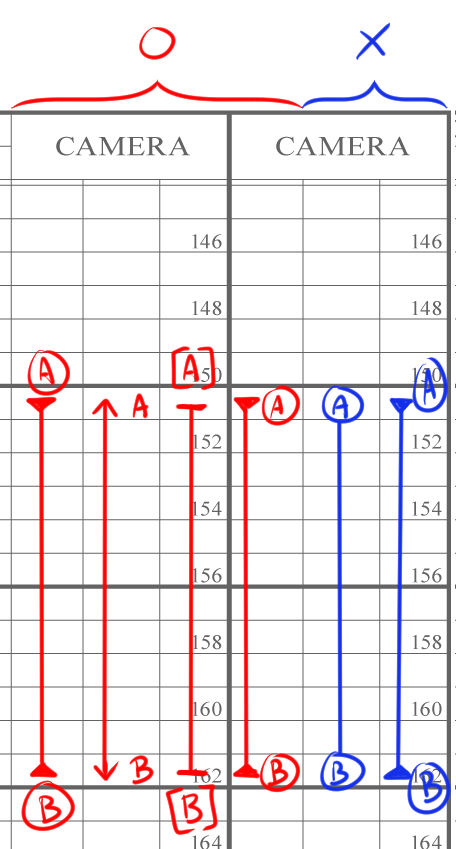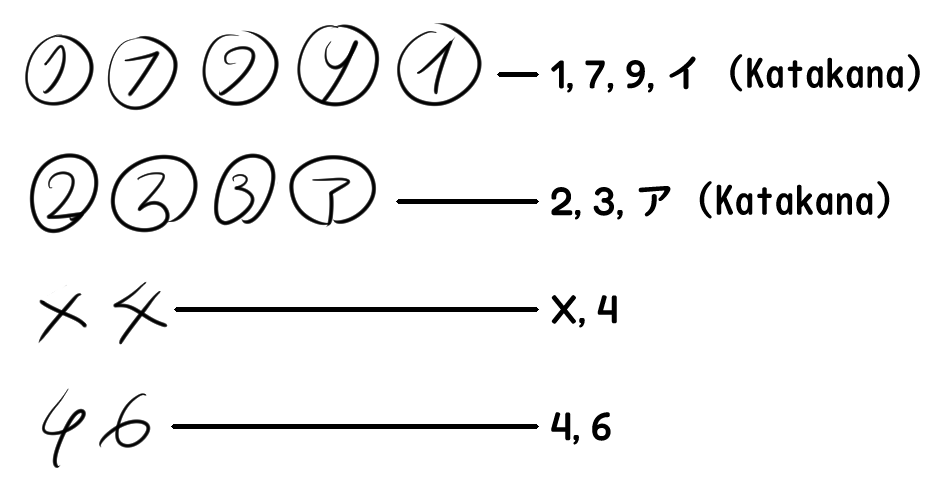
Timesheet
【Animation Sheet (アニメーションシート) / Exposure Sheet (エクスポージャーシート) / Filming Sheet (撮影シート)】
Definition
The timesheet is an instruction sheet that records, frame by frame, the acting, dialogue timing, camera work, and special effects of a cut.
- Animators and in-betweeners rely on it to create the drawings and complete the cut.
- It functions as the blueprint of the scene, ensuring that timing, motion, and sound are aligned.
- Each studio may have its own conventions, so if you join a production, always follow that studio’s method.
A sample file can be downloaded from the Files & Resources page.
*Note: The information presented here is based on professional experience. Procedures can vary depending on the studio or production. If you are ever working on-site, always follow the specific methods used by that studio.
If you want more detail on how to fill a timesheet, please visit the animation notations page.
Structure of the Timesheet
A typical timesheet includes:
- Frame count (24 fps standard)
- Action column (filled by the key animator with timing of poses and acting)
- Cel columns (A, B, C, …) for layers of animation
- Dialogue & lip-sync notes
- Camera work instructions (pans, zooms, section ranges)
- Special effects and compositing notes
- Memo section for additional instructions
Workflow
- Initial fill by key animator (Genga) → Action column contains key drawings (A, B, C…) with numbers for each drawing.
- A dot “・” between numbers means an in-between drawing.
- In-betweening staff (Douga) → Translate the key animator’s action notes into cel columns (A, B, C layers).
- Each cel column starts with number 1 (continuous numbering per layer).
- Numbers must be sequential with no gaps or duplicates.
- Numbering rules:
- Even if key animation starts at “3”, in-between numbering must begin at 1.
- No decimals: drawings like “3.5” or “6.5” must be renumbered into integers.
- If key drawings have letters (e.g., A-あ, B-イ), they must be converted into proper numbers.
- The last drawing marked “END” shows the total sheet length, vital for production management.

⚠️ Errors like missing numbers or duplicates cause chaos later:
- Finishing: “The last number is 20 but there are only 19 drawings ー missing frame?”
- Filming: “There are two B-3s, which one should I use?”
Lip-sync and Acting
For mouth movements:
- Shapes are specified for closed mouth ① / mid ② / open ③.
- These are aligned with the dialogue timing noted in the sheet.

End of Cut
- After the final frame, a thick line or shaded area is drawn to indicate the end of the cut.
- This prevents confusion about the total duration.

Common Notations (Conventions)
- Hold (静止): A horizontal line indicates that the cel remains still for a period.
- Stop (止め): For props or static background layers, mark “止メ” after the number and extend a line below it.
- Empty cel (空): If a cel disappears mid-cut, mark with an “×” and a wavy line from that point onward.
- Repeat (リピート): For looping, mark the repeat range and write “リピート” (Some studios instead copy the drawing numbers for each repeat).
- Reverse sheet (逆シート): After progressing normally, the numbers run backwards to return to the starting drawing, often used with repeat.

Camera Work Range
When specifying camera movements, two elements are combined:
- Section indication (区間指示) → a line with an end point symbol (端点記号) showing where the movement stops.
- Explanation in writing → describing the action.
- The end symbol doesn’t mean a specific frame number, but the range of frames where the action starts/ends.
- Animators often use letters (A, B, C) to mark sections, keeping the “genga sheet feel”.
- What matters is clarity and readability for all departments. Avoid writing on the lines of the timesheet, as it reduces readability and may cause confusion.

Best Practices
- Write large and clear numbers and symbols. Small, messy writing leads to mistakes.
- Always use sequential numbering starting at 1.
- Add memos if exceptions occur (extra in-betweens, removed drawings, adjustments after animation check). This is professional courtesy and prevents errors later.

Role in Production
- One timesheet per cut → serves as the master plan.
- Used daily by:
- Key animators & in-betweeners (timing, drawings)
- Directors & staging staff (acting, motion)
- Filming/compositing staff (camera moves, special effects)
It is as essential as the storyboard, the storyboard shows the vision, the timesheet makes it technically executable.
